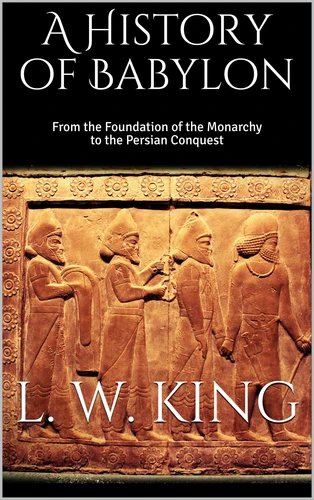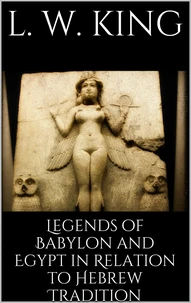A History of Babylon
Par :Formats :
Disponible dans votre compte client Decitre ou Furet du Nord dès validation de votre commande. Le format ePub est :
- Compatible avec une lecture sur My Vivlio (smartphone, tablette, ordinateur)
- Compatible avec une lecture sur liseuses Vivlio
- Pour les liseuses autres que Vivlio, vous devez utiliser le logiciel Adobe Digital Edition. Non compatible avec la lecture sur les liseuses Kindle, Remarkable et Sony
 , qui est-ce ?
, qui est-ce ?Notre partenaire de plateforme de lecture numérique où vous retrouverez l'ensemble de vos ebooks gratuitement
Pour en savoir plus sur nos ebooks, consultez notre aide en ligne ici
- Nombre de pages467
- FormatePub
- ISBN978-3-7481-2977-6
- EAN9783748129776
- Date de parution22/10/2018
- Protection num.Digital Watermarking
- Taille7 Mo
- Infos supplémentairesepub
- ÉditeurBooks on Demand
Résumé
Thanks to recent excavation Babylon has ceased to be an abstraction, and we are now able to reconstitute the main features of one of the most famous cities of the ancient world. Unlike Ashur and Nineveh, the great capitals of Assyria, Babylon survived with but little change under the Achæmenian kings of Persia, and from the time of Herodotus onward we possess accounts of her magnificence, which recent research has in great part substantiated.
It is true that we must modify the description Herodotus has left us of her size, but on all other points the accuracy of his information is confirmed. The Lion Frieze of the Citadel and the enamelled beasts of the Ishtar Gate enable us to understand something of the spell she cast. It is claimed that the site has been identified of her most famous building, the Hanging Gardens of the royal palace; and, if that should prove to be the case, they can hardly be said to have justified their reputation.
Far more impressive is the Tower of Babel with its huge Peribolos, enclosing what has been aptly described as the Vatican of Babylon.
It is true that we must modify the description Herodotus has left us of her size, but on all other points the accuracy of his information is confirmed. The Lion Frieze of the Citadel and the enamelled beasts of the Ishtar Gate enable us to understand something of the spell she cast. It is claimed that the site has been identified of her most famous building, the Hanging Gardens of the royal palace; and, if that should prove to be the case, they can hardly be said to have justified their reputation.
Far more impressive is the Tower of Babel with its huge Peribolos, enclosing what has been aptly described as the Vatican of Babylon.
Thanks to recent excavation Babylon has ceased to be an abstraction, and we are now able to reconstitute the main features of one of the most famous cities of the ancient world. Unlike Ashur and Nineveh, the great capitals of Assyria, Babylon survived with but little change under the Achæmenian kings of Persia, and from the time of Herodotus onward we possess accounts of her magnificence, which recent research has in great part substantiated.
It is true that we must modify the description Herodotus has left us of her size, but on all other points the accuracy of his information is confirmed. The Lion Frieze of the Citadel and the enamelled beasts of the Ishtar Gate enable us to understand something of the spell she cast. It is claimed that the site has been identified of her most famous building, the Hanging Gardens of the royal palace; and, if that should prove to be the case, they can hardly be said to have justified their reputation.
Far more impressive is the Tower of Babel with its huge Peribolos, enclosing what has been aptly described as the Vatican of Babylon.
It is true that we must modify the description Herodotus has left us of her size, but on all other points the accuracy of his information is confirmed. The Lion Frieze of the Citadel and the enamelled beasts of the Ishtar Gate enable us to understand something of the spell she cast. It is claimed that the site has been identified of her most famous building, the Hanging Gardens of the royal palace; and, if that should prove to be the case, they can hardly be said to have justified their reputation.
Far more impressive is the Tower of Babel with its huge Peribolos, enclosing what has been aptly described as the Vatican of Babylon.




